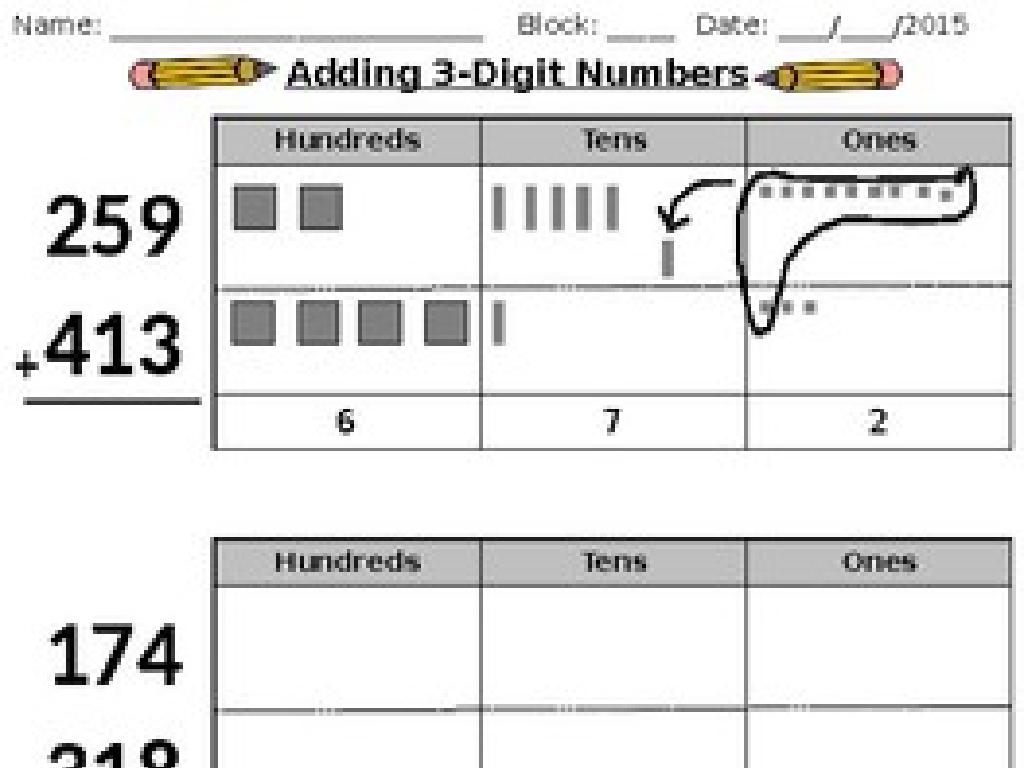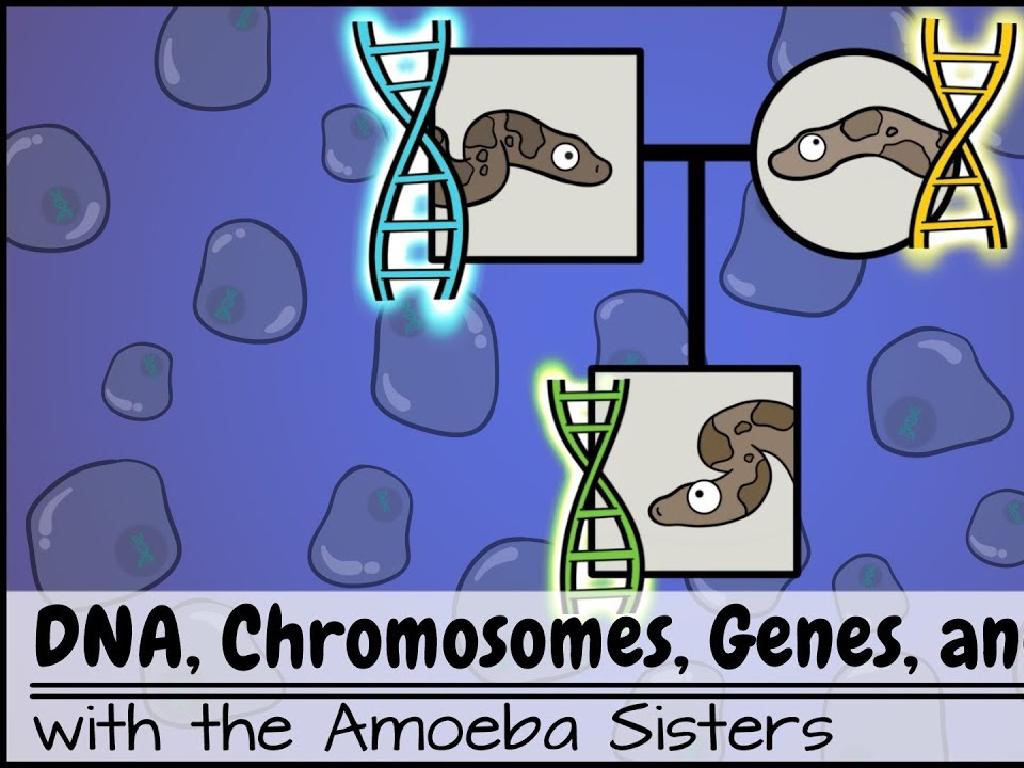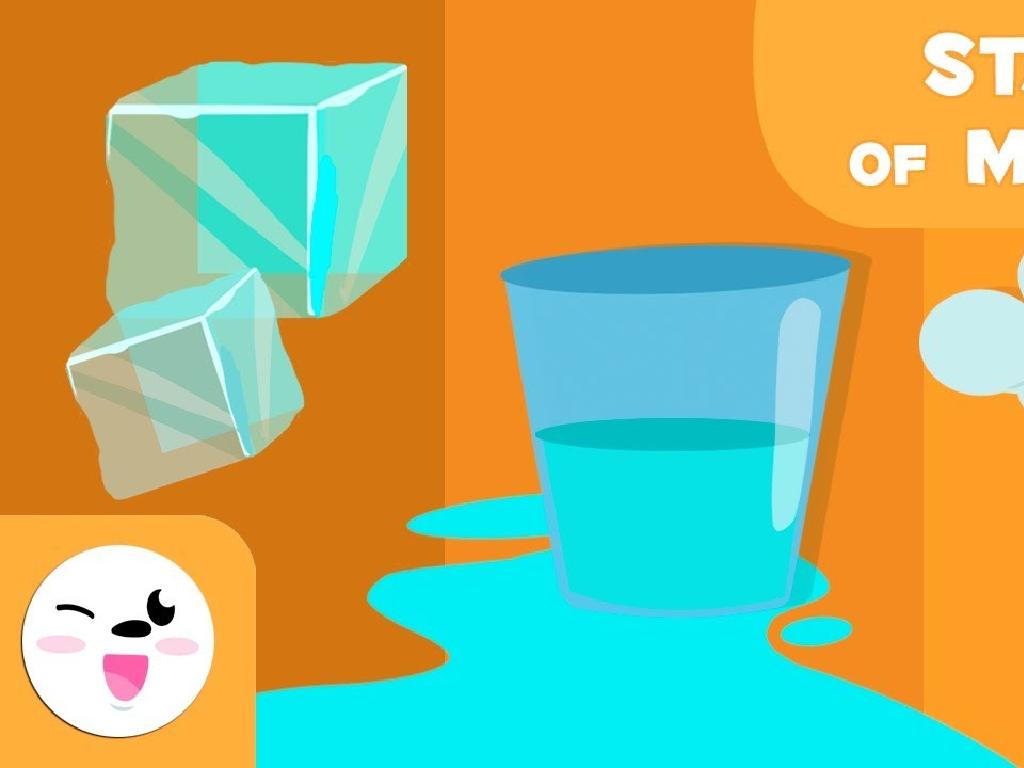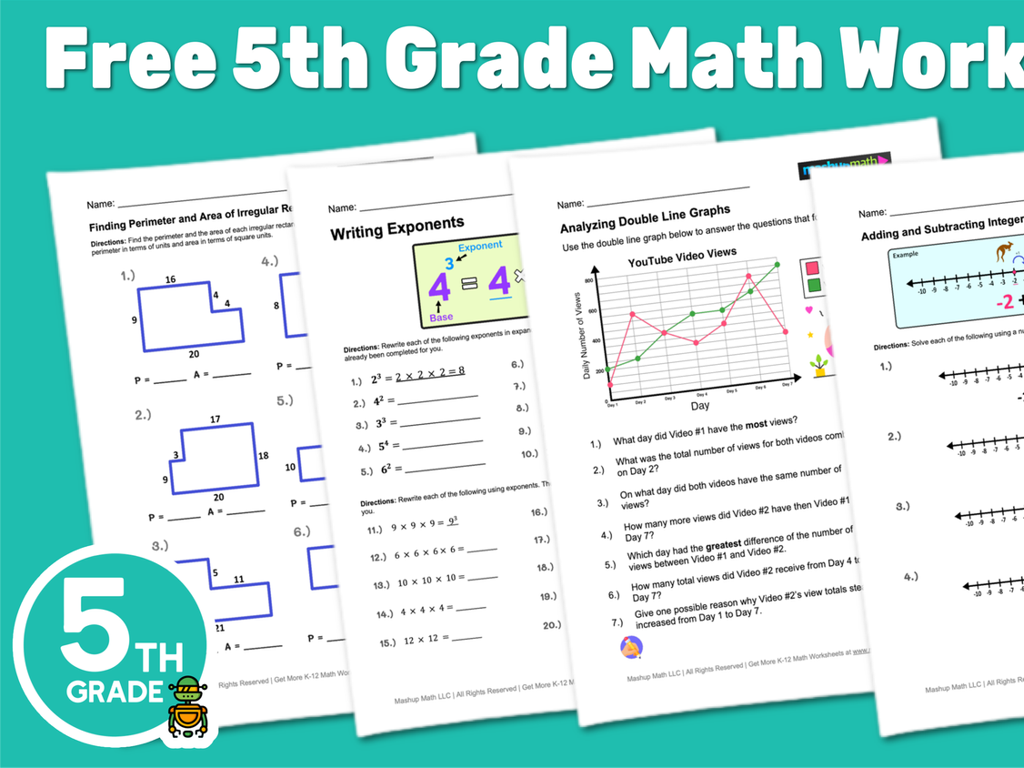Front, Side, And Top View
Subject: Math
Grade: Sixth grade
Topic: Three-Dimensional Figures
Please LOG IN to download the presentation. Access is available to registered users only.
View More Content
Understanding Views of 3D Shapes
– Recognize 3D shapes around us
– Everyday objects like boxes, balls, and cans are 3D shapes.
– Dimensions define shape structure
– Length, width, and height are dimensions that form 3D shapes.
– Exploring front, side, top views
– Each view shows a different aspect of the same 3D shape.
– Views reveal different perspectives
– Understanding views helps us visualize objects from all angles.
|
This slide introduces students to the concept of three-dimensional shapes and their representation through different views. Start by pointing out familiar objects that are 3D shapes. Explain that dimensions are measurements that define the structure of these shapes. Focus on how front, side, and top views provide different perspectives of the same object, which is crucial for understanding their structure. Use examples like a cereal box to show each view. Encourage students to draw their own 3D shapes and represent the different views to reinforce the concept.
Exploring Three-Dimensional Figures
– Define 3D figures
– Objects with length, width, and height
– 2D vs 3D shape differences
– 2D shapes are flat, 3D shapes have volume
– Everyday 3D figure examples
– Balls, cans, and boxes found around us
– Understanding 3D perspectives
– Views from front, side, and top reveal shape
|
This slide introduces students to the concept of three-dimensional figures, distinguishing them from two-dimensional shapes by highlighting their attributes of length, width, and height. Emphasize the difference by comparing flat 2D shapes like squares and circles to 3D shapes like cubes and spheres. Provide relatable examples such as a soccer ball (sphere), a soup can (cylinder), and a shoebox (rectangular prism) to illustrate 3D figures in everyday life. Explain how different views of the same object can help us understand its 3D structure. Encourage students to bring in simple 3D objects from home for a hands-on experience in the next class.
Perspectives of 3D Figures
– Understanding 3D figure views
– Learn to visualize various angles of a 3D object
– Perspective alters perception
– Same object looks different from various angles
– Identifying view aspects
– Front, side, top views have unique features
– Practice with common objects
– Use dice, boxes to understand different views
|
This slide introduces students to the concept of viewing three-dimensional figures from different perspectives. Emphasize the importance of understanding how a single object can appear differently depending on the viewpoint. Explain that the front view is what we see from the front, the side view from the side, and the top view from above. Use everyday objects like dice or boxes to illustrate these concepts. Encourage students to rotate objects to see how perspectives change. This will help them in identifying and drawing different views of 3D figures, a skill useful in both mathematics and real-world applications.
Understanding Front View of 3D Figures
– Define the front view
– The front view is what you see when looking straight at an object.
– Characteristics of front view
– It shows height and width, but not depth.
– Examples of front views
– A cube’s front view is a square; a cylinder’s is a rectangle.
– Non-examples to contrast
– A side view or a top view is not a front view.
|
This slide introduces students to the concept of the front view of three-dimensional figures. The front view is the perspective of the object as seen from directly in front, showing the height and width but not the depth. It’s important to help students distinguish between different types of views. Provide clear examples, such as a cube appearing as a square from the front, and contrast with non-examples, like the side or top view, to solidify their understanding. Encourage students to visualize different 3D shapes and consider what these would look like from the front. This will prepare them for drawing and interpreting various views of 3D objects.
Understanding Side Views of 3D Figures
– Define the side view
Side view is the perspective from either left or right of an object.
– Differentiate left vs right side
Left side view is what you see on the left, right side is the opposite.
– Practice with side view examples
Use shapes like cubes or pyramids to visualize different side views.
– Engage in side view identification
|
This slide introduces students to the concept of side views in three-dimensional figures. Begin by defining what a side view is and how it represents the perspective from one side of an object. Clarify the difference between left and right side views by using directional cues. Provide examples using common 3D shapes such as cubes, pyramids, and cylinders, and show how these shapes look from the side. Encourage students to practice by drawing side views or identifying them in various objects around the classroom. This will help them visualize and understand the concept of side views in a practical and engaging way.
Understanding Top Views of 3D Figures
– Define the top view of 3D objects
– Top view is the view from above a 3D object
– Differences from front and side views
– Top view shows the object’s layout from above, while front and side show height and width
– Recognizing top views in objects
– Look for shapes and details hidden from the side or front but visible from the top
– Practice with examples
|
This slide introduces students to the concept of the top view of three-dimensional figures, an important aspect of spatial visualization. The top view is what you see when looking down at an object from above. It’s crucial to distinguish this perspective from the front and side views, which show different dimensions of the object. Encourage students to visualize objects like a box or a house and consider what details become visible from the top that aren’t seen from the front or side. Provide various examples of common objects to help them practice recognizing top views. This will aid in developing their ability to interpret and draw different views of three-dimensional figures.
Sketching Views of 3D Figures
– Sketching 3D figure views
– Learn to draw front, side, and top views of 3D objects
– Tips for visualizing views
– Imagine slicing the object with a plane or peeling off each side to lay flat
– Class practice: drawing exercise
– Use a simple object, like a cube or cylinder, and sketch its three views
|
This slide introduces students to the concept of drawing different views (front, side, and top) of three-dimensional figures, which is a key skill in both mathematics and engineering. Start by explaining the process of sketching each view, emphasizing the importance of perspective and proportion. Offer tips for visualizing each view, such as imagining slicing the object with a plane or peeling off each side to lay it flat. For the class practice, provide a simple 3D figure like a cube or cylinder and guide students through the process of drawing each view. Encourage them to share their drawings and discuss any challenges they encountered. This activity will help students understand how 3D objects are represented on paper and improve their spatial reasoning skills.
Activity: Viewpoint Gallery Walk
– Split class into groups
– Each group gets a 3D model
– Draw front, side, and top views
– Use graph paper for accuracy
– Gallery walk to discuss views
– Observe how each view represents the 3D model differently
|
This activity is designed to help students understand the concept of different perspectives of three-dimensional figures. By working in groups, students will engage with a physical 3D model and sketch the front, side, and top views on graph paper, which will aid in precision. After the drawing exercise, students will participate in a gallery walk, allowing them to observe and discuss how each group represented the same model from various viewpoints. This will reinforce their spatial reasoning skills and their ability to translate three-dimensional objects into two-dimensional representations. For the teacher: Prepare several distinct 3D models for the groups, ensure each student has access to graph paper, pencils, and erasers, and facilitate the gallery walk by prompting discussion and comparison between the different groups’ work.
Review and Reflection: Views of 3D Figures
– Recap of today’s lesson
We explored front, side, and top views of 3D shapes.
– Significance of different views
Different views help us understand all aspects of a 3D figure.
– Share an interesting discovery
Each student shares one aspect they found intriguing.
– Reflect on our learning
|
This slide aims to consolidate the day’s learning by encouraging students to reflect on the importance of viewing three-dimensional figures from various perspectives. Understanding different views is crucial for interpreting and representing 3D objects in two dimensions, which is a key skill in many fields, including engineering and architecture. Encourage each student to think about and share one point from the lesson that they found particularly interesting or surprising. This reflection helps to reinforce their understanding and allows them to appreciate the practical applications of the concepts learned. It also provides an opportunity for the teacher to assess the students’ grasp of the material and to clarify any misconceptions.
Homework Challenge: Exploring 3D Figures
– Select a household object
– Sketch front, side, and top views
– Draw each view on a separate sheet of paper
– Reflect on the purpose of each view
– Consider how different views represent the object’s dimensions
– Prepare to present your sketches
|
This homework assignment is designed to help students apply their understanding of three-dimensional figures to real-world objects. By selecting a household object, students will practice visualizing and drawing the front, side, and top views, which are essential in representing 3D objects on a 2D surface. Encourage students to think critically about how each view contributes to a comprehensive understanding of the object’s shape and structure. In the next class, students will share their drawings, fostering a discussion on the importance of different perspectives in mathematics and everyday life. Provide examples of how these skills are relevant in various fields, such as architecture, engineering, and design.





